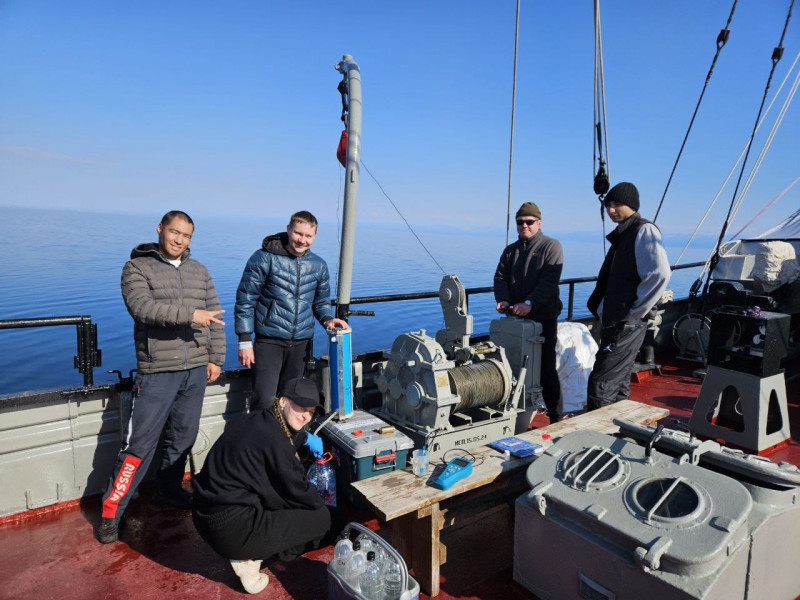Expedition on the R/V “Titov” on May 24-27, 2024
On May 24-27, 2024, a research expedition on board the R/V “Titov” was conducted within the RNF project “Microeukaryote communities in the reservoirs of the Angara Cascade” (23-14-00028) (led by Ye.V. Likhoshway) in order to compare the diversity of microeukaryotes in Southern Baikal (SB) and Irkutsk Reservoir (IR) with the data of June 2023. Water samples were collected from the photic layer (up to 25 m in SB and up to 5 or 10 m in IR) using a Niskin bathometer at 9 stations in SB (12 km from Kultuk, 3 km from Maritui, Maritui-Solzan, 3 km from Solzan, Tolsty-Snezhnaya, 3 km from Listvyanka, Listvyanka-Tankhoy, 3 km from Tankhoy, Kadilny-Mishikha), and at 8 stations of IR including bays (Kurma, Elovy, Ershovsky). Water transparency was determined with a Secchi disk. After determining the temperature, pH and redox potential (ROP) of water, samples were collected on filters for their further examination by scanning electron microscopy (SEM), quantification analysis of phytoplankton composition by light microscopy (LM) and DNA isolation for sequencing to determine the taxonomic composition of microeukaryotes and with a Juday net for culturing microalgae species.
The expedition found that at the time of sampling, SB and IR sampling differed less significantly from each other in habitat parameters than in June 2023 at the same stations due to the earlier sampling period. In SB, waters were less transparent at 9.5-13 m compared to 10-22 m in June 2023, and cooler at 2.5-3.2 °C compared to 3.6-5.0 °C in 2023. In IR, water temperatures were also cooler at 9.8°C compared to 12.7°C in June 2023, and more transparent at 4-10.5 m compared to 3-5 m in 2023. In the central part of the Angara River, from the source to the dam, the surface water layer temperature increased from 3.65 to 4.1–5.7 °C, while in June 2023 it ranged from 6.0 to 11.7–12.1 °C. The pH of the surface water layer was 8.03-8.38 inBSW and increased to 8.1-8.52 in IR. In June 2023 pH values were lower in SB (7.0-8.0) and higher iR IW (8.7).
Preliminary analysis of selected samples using SM revealed differences in both abundance and species composition of phytoplankton in SB and IR compared to the 2023 data. In May 2024, the phytoplankton of SB and IR were similar, dominated by diatoms, chrysophytes, and green microalgae. The dominant diatoms were Fragilaria radians (Kützing) D.M.Williams & Round, Ulnaria acus (Kützing) Aboal, Nitzschia graciliformis Lange-Bertalot & Simonsen and the chrysophyte Dinobryon cylindricum O.E. Imhof. The green algae Monoraphidium griffithii (Berkeley) Komárková-Legnerov and Koliella variabilis (Nygaard) Hindák played an important role in the phytoplankton. The phytoplankton of IR bays was generally similar to the phytoplankton of the central part of the reservoir, but it was more abundant and more diverse.
The data are preliminary, the samples will be further analyzed by SM and SEM, DNA will be extracted, high-throughput sequencing and bioinformatic analysis of the sequences obtained will be used to determine the taxonomic diversity of microeukaryotes.
Participants of the RNF project (I.S. Mikhailov, V.V. Buzevich, M.A. Nalimova) took part in the expedition, microscopic analysis was performed by A.Y. Bessudova. The participants of the expedition are grateful to the R/V “Titov” crew for their precise and well-coordinated work.








